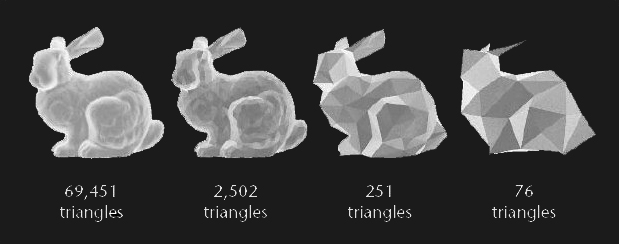Originally from the world of video games, real-time 3D is a technology that has spread beyond gaming. Essential for virtual and augmented reality experiences, real-time 3D is winning over professionals with its power of interactivity and immersion. Industries see it as an opportunity to reduce production costs and time-to-market.
How does this video game technology stimulate creativity in industry?
What is real-time 3D?
Real-time 3D vs pre-computed 3D comparison
Real-time 3D is a technology originally from the world of video games. It is as opposed to pre-computed 3D, where the rendering is calculated by a computer beforehand.
Real-time 3D enables immediate rendering of a 3D object, with no delay before viewing. The technology was created for interactive purposes, allowing freedom of movement within a 3D scene. Objects can be moved, parameters modified and new elements created, with immediate feedback thanks to lower latency (30 to 60 FPS on average).
For a long time, pre-computed 3D has stood out for the high quality of its graphics. The photorealistic renderings it offers are ideal for the world of cinema or real estate. In recent years, however, processors and graphic charts have improved considerably.
Today, the graphic quality of real-time 3D is second to none. With its added notion of interactivity, real-time 3D is tending to become the norm within creative processes, thanks to frequent innovations.
Real-time 3D: significant technological advances
Real-time 3D technology is made possible by specific software such as Unreal Engine, developed by Epic Games, the famous American video game distributor.
Over the years, these tools have been improved to facilitate the work of designers and developers. Thanks to Unreal Engine, the quality of the renderings obtained is of a level of realism and precision never achieved by any competitor. What’s more, two recent innovations have set new standards: Lumen and Nanite.
Lumen is a dynamic global illumination tool that facilitates the management of lighting in a 3D scene. This must be seen in the context of another rendering technique, rasterization, which can be enhanced with a static pre-calculation layer (Baking).
In concrete terms, what improvements does Lumen bring? It is no longer necessary to add light sources to a scene in an attempt to reproduce reality, but rather to imitate reality without adding additional light sources.
With LOD, multiples models helps optimize rendering performance, at the expense of the tool’s development cycle.
Nanite has also greatly simplified the creation process by eliminating the need to design gradient quality models (better known as LODs). The level of detail (LODs), corresponds to the geometric precision of a digital model, the appearance of which is determined by the angle of view and by the distance between the object and the user.
In concrete terms, now with Nanite, Unreal Engine reconstructs the 3D object with the ideal and optimized definition according to the object’s distance from the precise viewing requirement. So, in theory, there are no limits to geometric complexity.
In other words, the object is cut into recursive subsets, called clusters, which are displayed by the engine according to the space they occupy on the screen on which they are displayed. This is a geometry virtualization technique.
Divided into clusters, Nanites technology enables user-visible areas only to appear on screen, optimizing rendering performance without the need for more costly and time-consuming development methods.
Massive adoption of real-time 3D in the industrial sector
How does this video game technology stimulate creativity in the industry?
Real-time 3D has found its way from the world of video games to the industrial sector.
Today, industry tends to prefer real-time 3D to pre-computed 3D, which has become less flexible and more restrictive. The video game technology is more appealing to industry thanks to the immersion and interactivity it offers.
Studio visualization, on the other hand, is static, and the user is merely an observer. With real-time 3D, you become an actor in the experience, and your creativity is constantly boosted.
First and foremost, working with real-time 3D means that several people can be immersed in a virtual environment. Team collaboration is therefore possible. On the one hand, scientific studies have shown that immersion results in a better user experience, thanks to greater interactivity and dynamism. On the other hand, teamwork in a virtual environment is known to boost ideation and creativity.
Real-time 3D boosts engagement
The result is faster decision-making. Compared with studio visualization, real-time 3D lets you modify elements live, since rendering is immediate.
Decisions are easier to make, because users have the result of an idea in front of them. Having the rendering in real time means they can bounce back and modify what doesn’t fit. This gives rise to new ideas that would not have emerged with a studio visualization, without interaction. Real-time 3D boosts participant engagement and other interesting benefits.
Advantages and concrete applications of real-time 3D technology in industry
Unrivaled immersion and interactivity
Manufacturers mainly use real-time 3D for data visualization and design assistance (CAD).
As we’ve already seen, its great advantage is that it enables an immersion and interactivity unmatched by other technologies. Real-time 3D experiences can be deployed on VR headsets, AR glasses, smartphones, tablets and computers. Both factors result in an experience that’s closer to the real thing.
For the company, a virtual environment has many uses, from design to sales, with two main objectives: optimizing costs and reducing time-to-market.
Concrete applications of real-time 3D
First, there are 4 applications of real-time 3D in industry:
- Design and Engineering: prototyping, design reviews, virtual commissioning
- Construction and Manufacturing: operators training, augmented reality assistance, factory simulation
- Marketing and Sales: virtual events, photorealistic rendering, promotional videos
- Services and Operations : remote maintenance, security training, digital twins for data visualization and simulation
Several outlets for the industrial sector
The results of using real-time 3D in the industrial sector are many:
- Improving production processes and flows
- Reducing costs (no physical prototypes)
- Faster time-to-market (automated systems, simulated environments)
- Higher product margins (better-trained workforce, more reliable after-sales service)
- Sales growth (more attractive products)
With technological advances, particularly in graphics, real-time 3D has nothing to envy studio visualization or pre-computed 3D.
Its many advantages include an immersive and lifelike experience, with unparalleled interaction. Immediate rendering is an undeniable asset for manufacturers, who see real-time 3D as a tool that boosts creation and therefore production.



